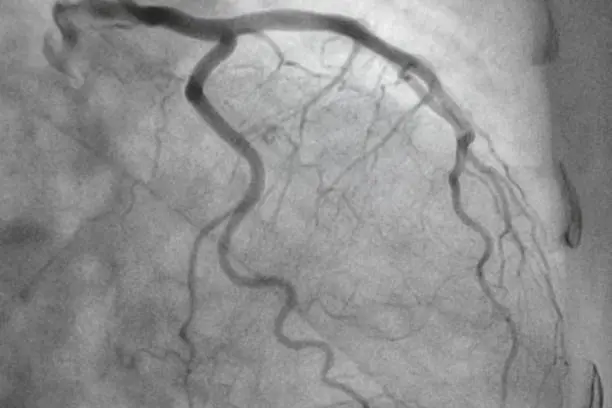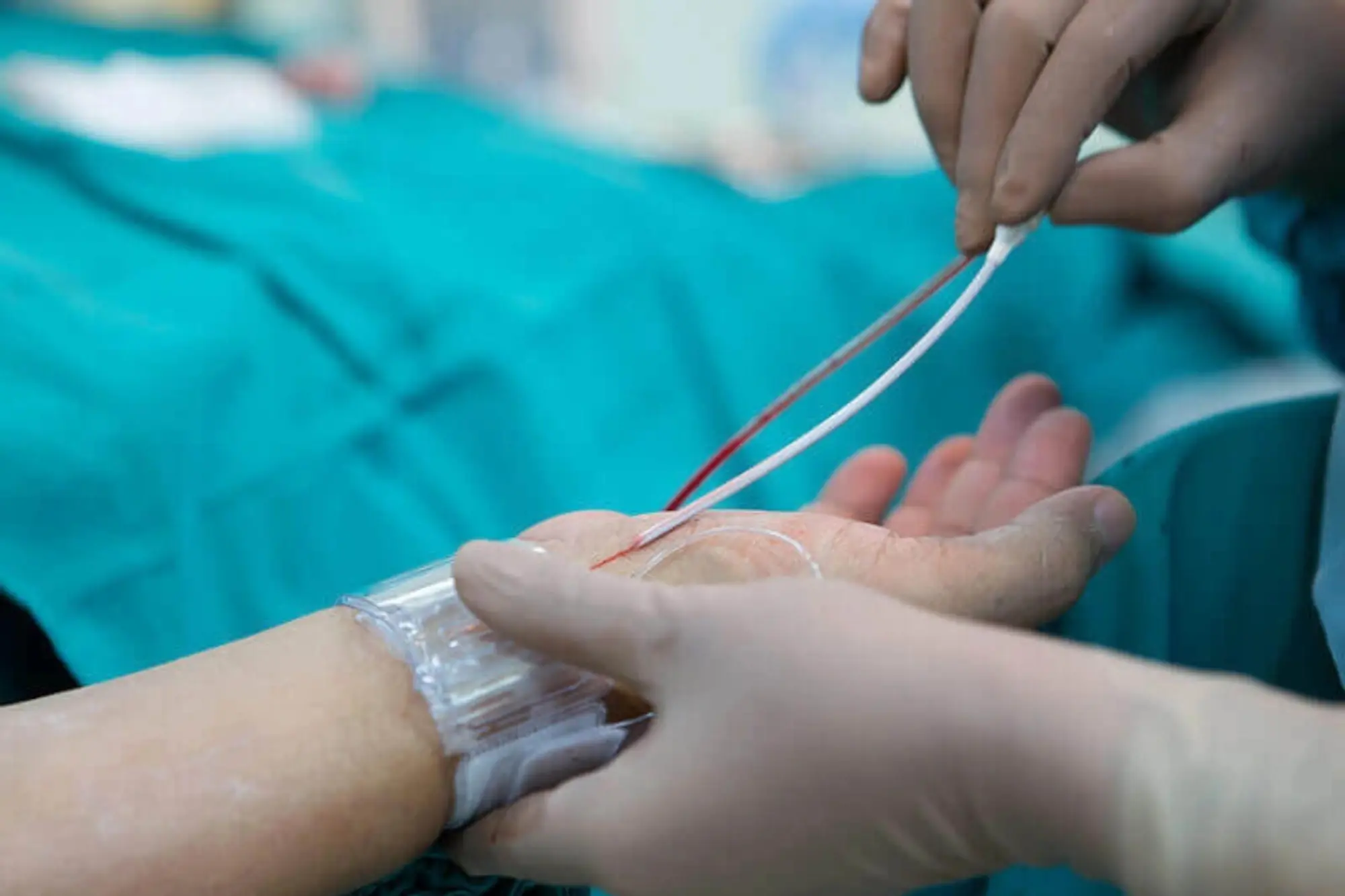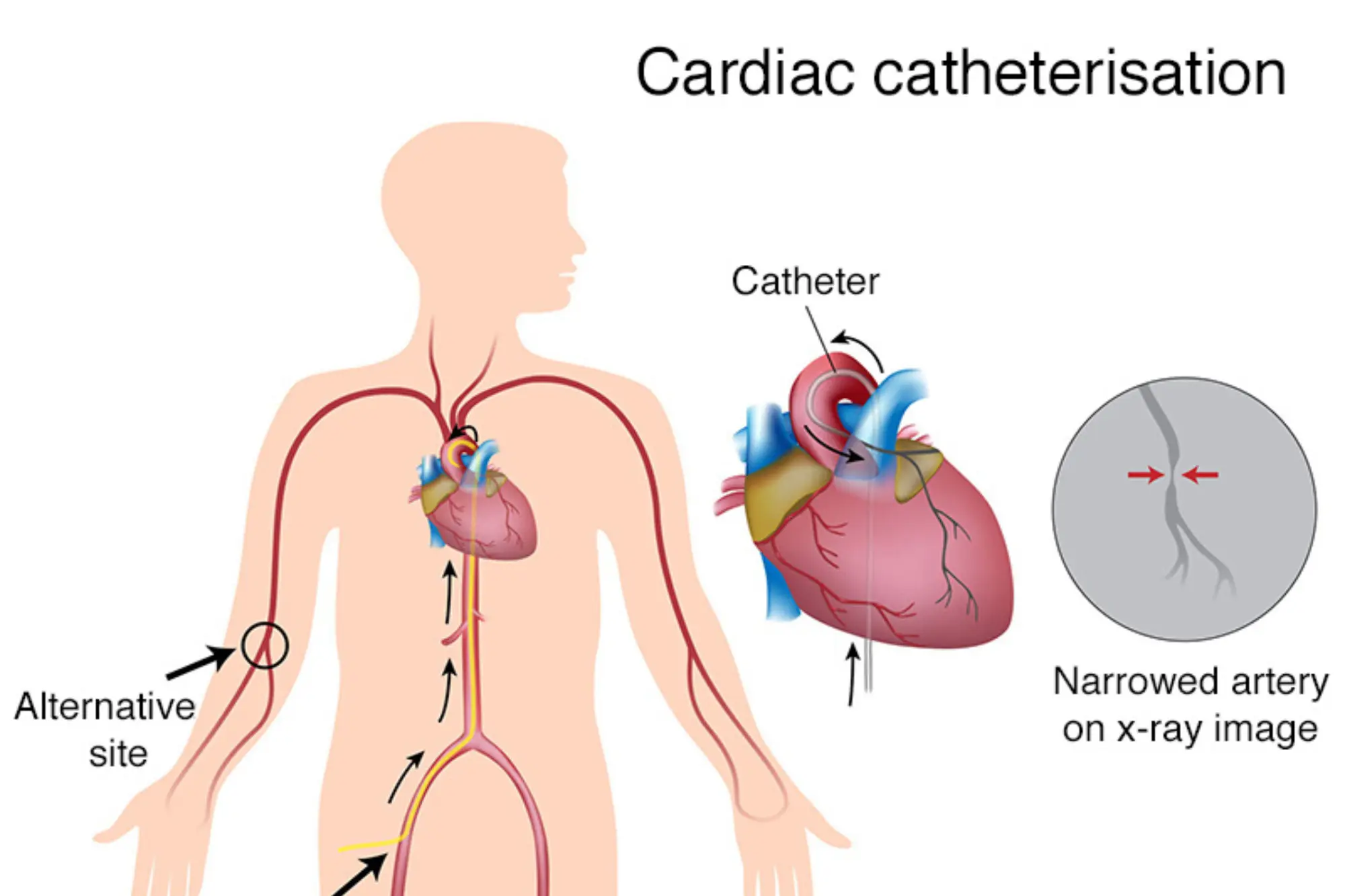Angiogram
Angiogram is a diagnostic imaging test that visualizes blood flow through arteries and veins. It helps detect blockages or narrowing that could lead to heart conditions.
- Home
- Service
- Angiogram

Description
An angiogram, often called coronary angiography when focused on the heart, uses contrast dye and X-ray imaging to assess the condition of blood vessels. This procedure is crucial in evaluating patients with symptoms like chest pain, shortness of breath, or unexplained heart issues.
Performed in a cath lab under local anesthesia, the test helps cardiologists plan treatments such as stenting, angioplasty, or bypass surgery. The entire process is typically safe, fast, and provides real-time insights into cardiovascular health.
Performed in a cath lab under local anesthesia, the test helps cardiologists plan treatments such as stenting, angioplasty, or bypass surgery. The entire process is typically safe, fast, and provides real-time insights into cardiovascular health.
Conditions Treated
- Coronary artery disease (CAD)
- Arterial blockages
- Aneurysms
- Congenital heart defects
- Peripheral artery disease (PAD)
Tests and Treatments Offered
- ECG (Electrocardiogram)
- Echocardiogram
- Cardiac stress test
- Coronary angioplasty
- Stent placement
Special Offer on Angiogram
Actual Price
₹15,000
₹9,999/- Only
Terms & Conditions Apply*
Book Appointment
How it works
Procedure and Process Treatment

Pre-Test Evaluation
Your vitals and history are reviewed, and fasting is advised. Local anesthesia is prepped at the insertion site.

Catheter Insertion
A catheter is inserted through the groin or wrist artery to access heart vessels.

Dye Injection & Imaging
Contrast dye is injected, and X-ray images track the blood flow in real-time.

Results & Next Steps
Findings are shared immediately. If a blockage is found, treatment like angioplasty may be done on the spot.

See Inside, Act Early
An angiogram is your window into heart health. It provides clarity on blocked vessels and enables faster treatment decisions. With expert hands and cutting-edge tools at Lowcost Surgicals, you get the clarity and care your heart deserves.
Frequently Asked Questions
Understanding what to expect from an angiogram helps ease anxiety and prepare for better outcomes. Below are answers to common patient concerns:
Typically, the angiogram takes 30 to 60 minutes. If a stent or angioplasty is done at the same time, it may take longer.
Yes. You’ll be awake but under local anesthesia. You may feel slight pressure but not pain during the procedure.
If it's a basic diagnostic angiogram, you may go home the same day after 4–6 hours of observation. If additional procedures are done, you might stay overnight.


